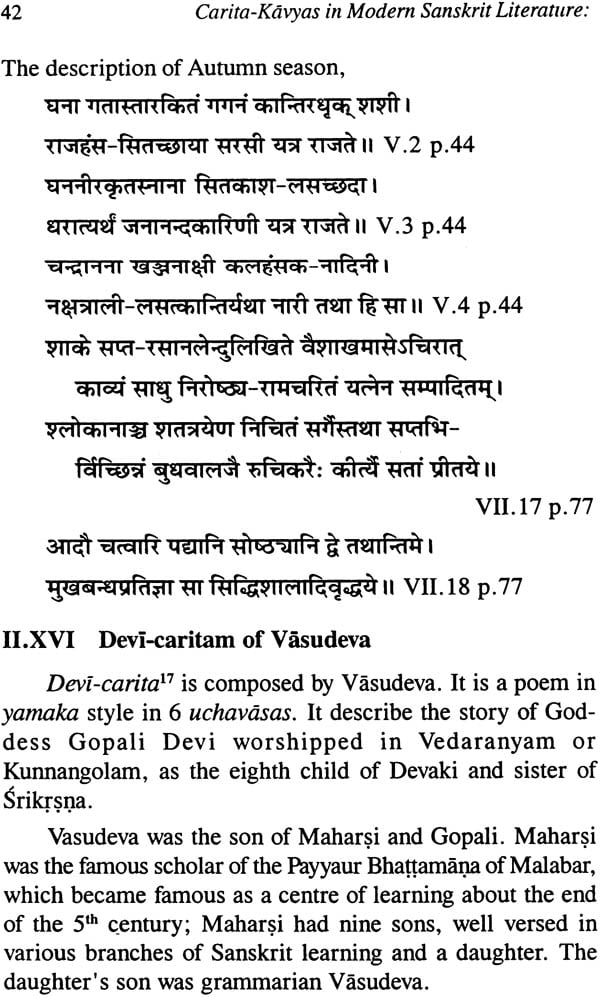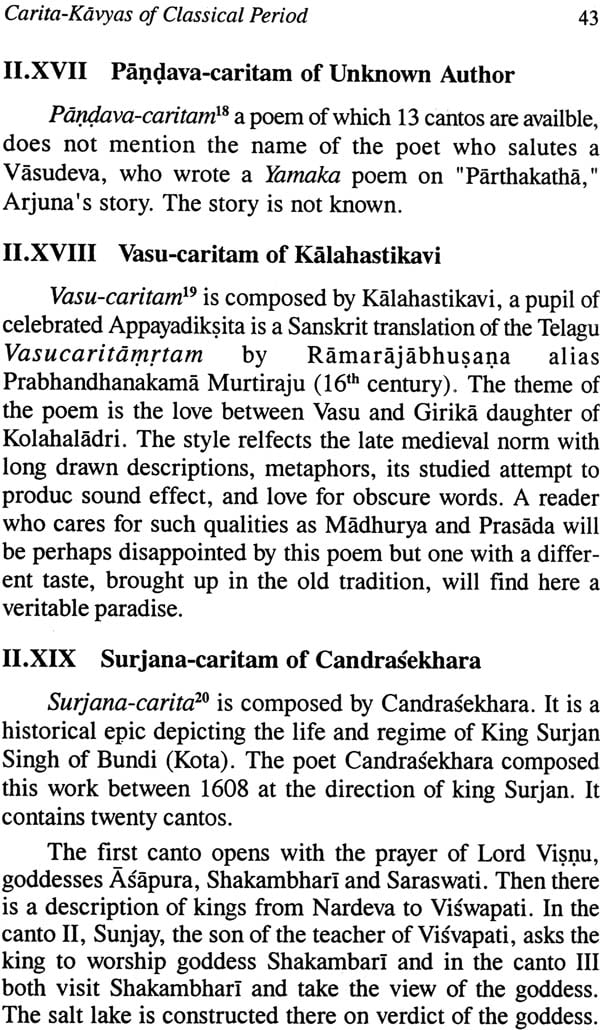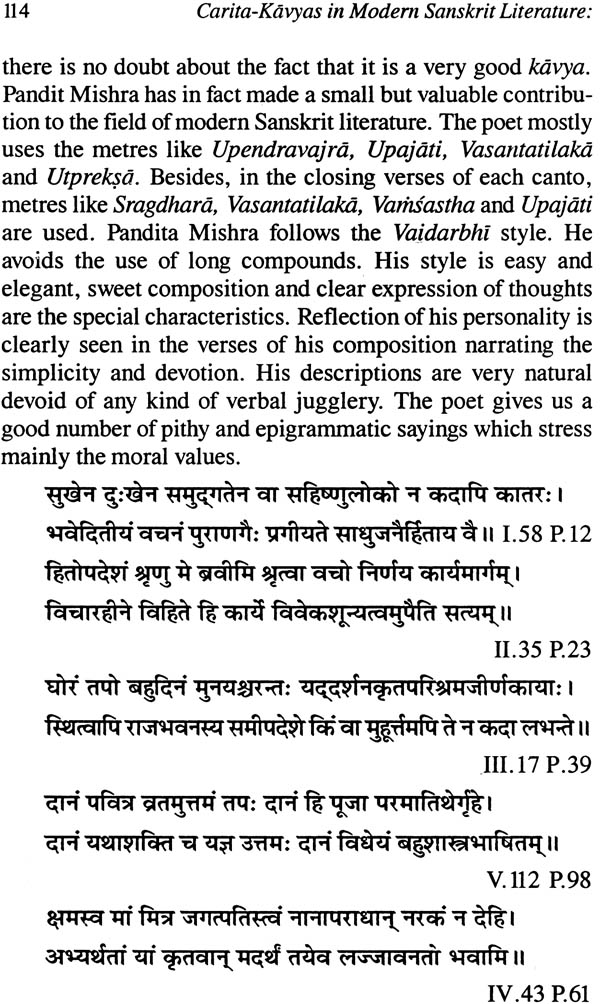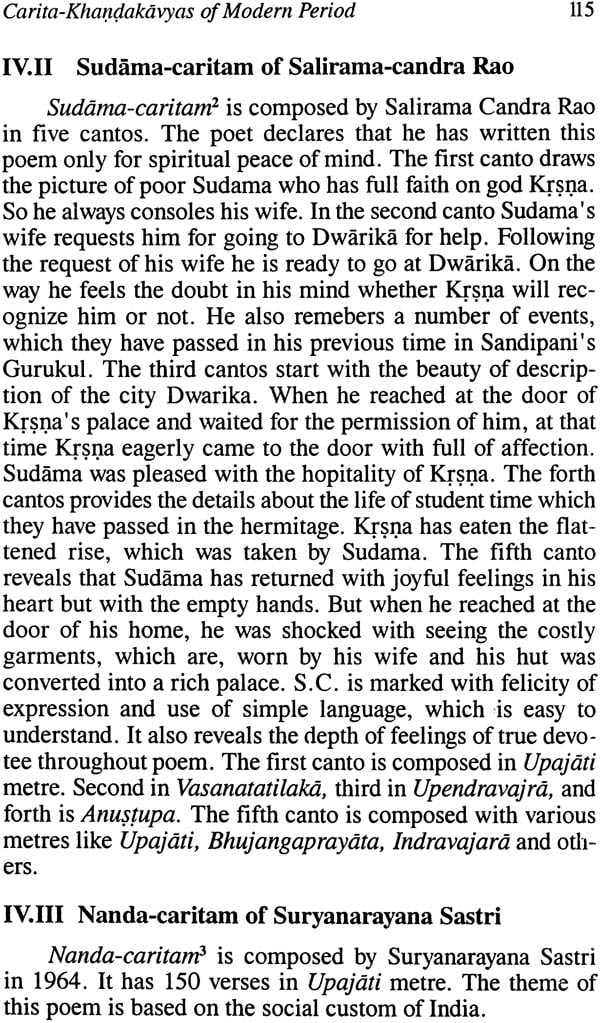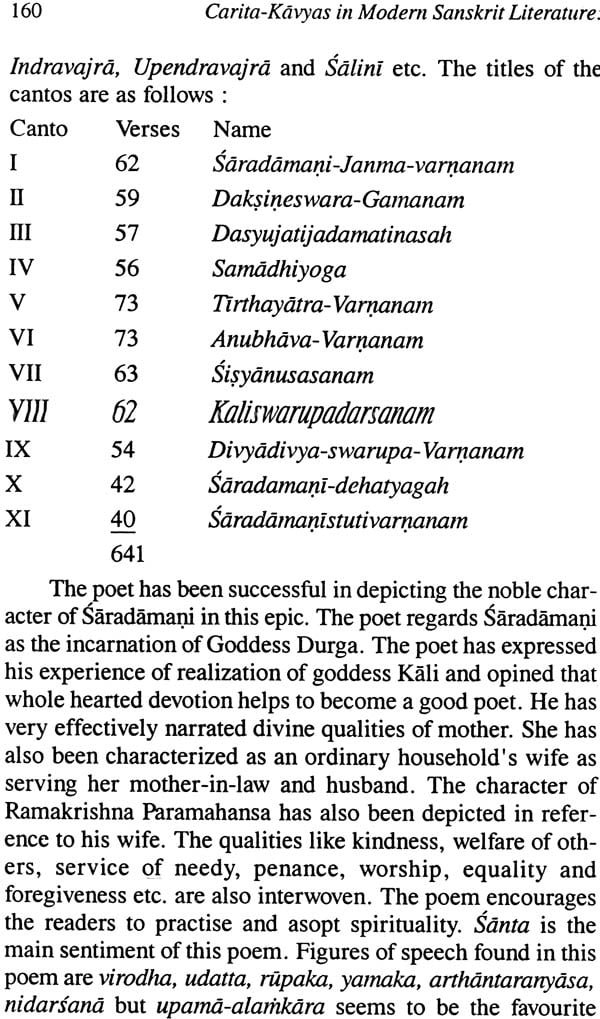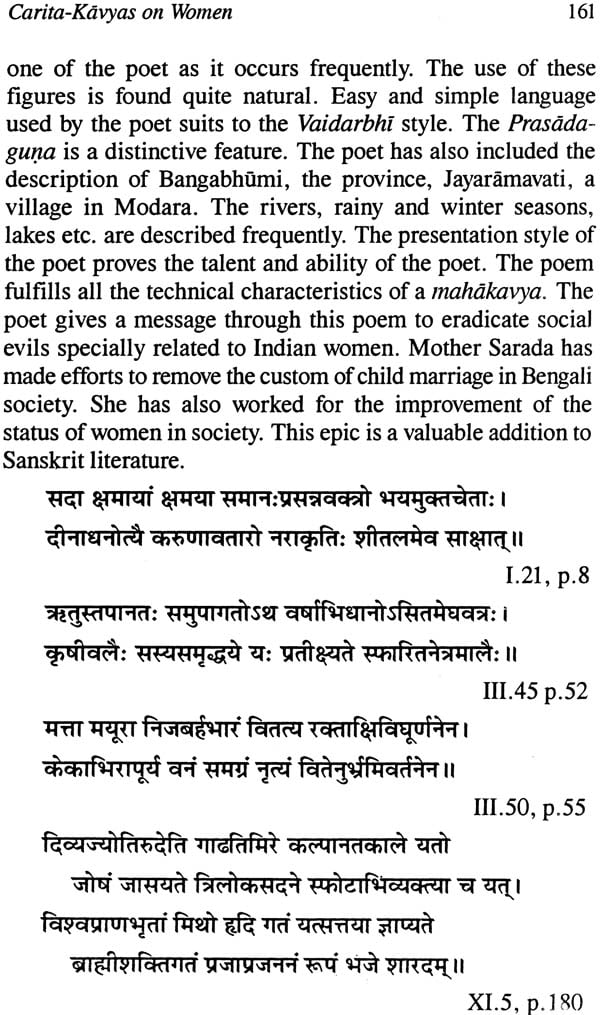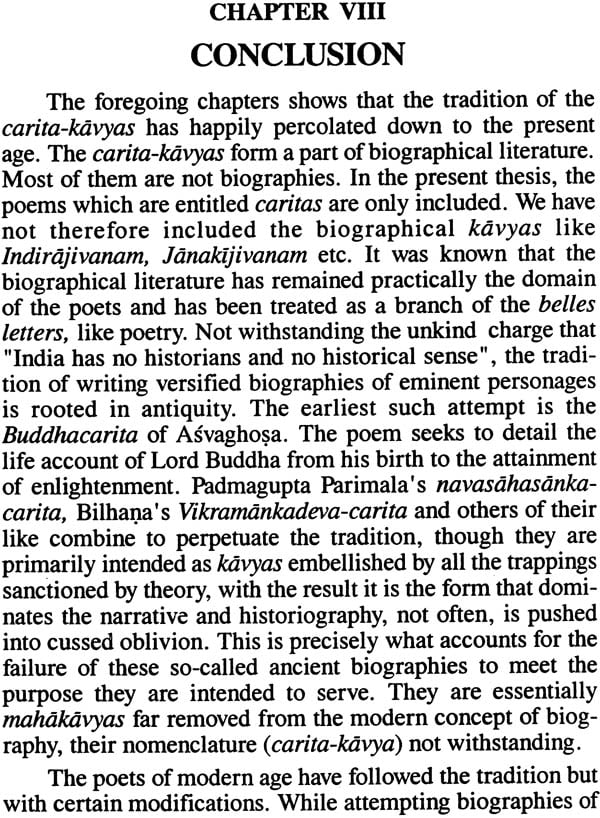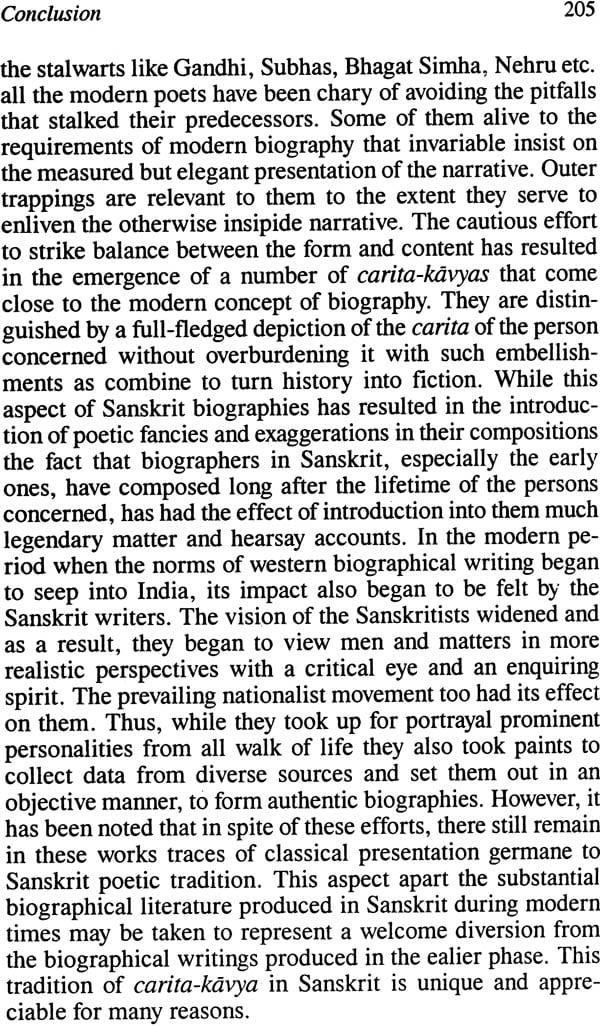
Carita - Kavyas in Modern Sanskrit Literature
Book Specification
| Item Code: | NAN654 |
| Author: | Daxa Purohit |
| Publisher: | Bharatiya Kala Prakashan |
| Language: | English and Sanskrit |
| Edition: | 2017 |
| ISBN: | 9788180903465 |
| Pages: | 250 |
| Cover: | Hardcover |
| Other Details | 8.5 inch X 5.5 inch |
| Weight | 430 gm |
Book Description
Carirakavya in Modren Sanskrit Literature has a long tradition starts from Adikavya Ramayana of Valmiki. In Morden age also the rich tradition of Caritakavya is Continously flourished to date. The heroes of the different fields of Indian Society are used to depict in Morden Sanskrit Carutakavya by contemporary Sanskrit poets. It will critically evaluate it. The present thesis is divided in eight chapters. The list of modern Carita kavyas given in appendix, is adding the utilly of the thesis.
Dr. Daxa Purohit temporary lecturer, Department of Sanskrit, Pali and Prakrit, Faculty of Art, The Maharaja Shivajirao University of Baroda.
Among the various types of Sanskrit poetry Caritkavya has its own identity and traditon as well. Caritakavya has a long tradition starts from Adikavya Ramayana of Valmiki. In modem age also the rich tradition of Caritakavya is continuously flourishing to date. The heroes of the different fields of Indian society are used to depict in modem Sanskrit Caritakavyas by contemporary Sanskrit poets. It will critically evaluate it. The present thesis is a goal effort to this direction. The thesis is divided in eight chapters. The list of Modern Carita kavyas given in appendix, is adding the utility of the thesis.
Chapter: 1 contains the introduction to the Caritkavyas. It explains the main features of Carita kavyas and analyses the reasons behind the growth of Carita kavyas. Chapter: 2 presents the critical survey of the Caritakavyas starts from the Buddha caritam of Asvaghosa. The candidate also includes the jain tradition of Caritakavyas. Chapter: 3 depicts the important features of some notable Mahakavyas of 19th century, like Ksatrapati -Caritam etc. Chapter: 4 deals with the Khandakavyas of modem Sanskrit. It also analyses and evaluates the Khandakavyas of the Modern period. Chapter: 5 deals with the Laghu Caritakavyas. It depicts the salient features of Modern Laghu Caritakavyas and also trace out tradition of modern Laghu Caritakavyas, Chapter: 6 deals with the Caritakavyas on celebrated women of all times, like Ahalya, Stta, Queen Victoria, Indira Gandhi etc. The very apporoach of the researcher is praise worthy. Chapter: 7 contains an appraisal of all Carita Kavyas selected for this study.
Rajasekhara, the author of the Kavyamimamsa holds the view that literature is of two types viz. sastra and kavaya. While the former is a product of prajna the latter is of pratibha. Both are like two parths of Sarasvati, the goddess of learning. hile sastra is for hard brained people, kavya is for sukumarmatis as rightly said by Visvanatha in his Sahityadarpana. The distinctive feature of kavya is niyatikrtaniyamarahita, alhadaikamayi ananyaparatantra, navarasarucira as specified by Mammata in his Kavyaprakasa.
The kavya is therefore flowing like the river Ganges regularly from the time immemorial. The Rgveda is the earliest kavya in Sanskrit language. It contains some specimen of fine poetry. Most of the hymns are invocations of gods and goodesses who are personified natural phenomena with anthropomorphic traits. The Yajurveda contains sacrificial formula relating to various sacrificial rites in prose. The Samaveda is meant for chanting of mantras in sacrifices. The Atharvaveda contains matters relating to magic. The Brahmanas are theological treatises dealing elaborately with the niceties of rites and rituals. Upanisads are philsophical treatises.
K.Kunjuni Raja rightly states: "As poetry, the Rgveda reveals certain features that are not seen in the recorded remnants of other ancient civilizations. Love of nature is one such feather that is very prominent in the poetry of the Rgveda. There is no ancient nation that has developed a poetic literature comparable to the poetry of the Rgveda. No nation is the ancient world that has developed a rich poetry, like the Greeks, has developed any nature poetry. The Rgveda is essentially natural peotry, dealing with allusions to the familiar objects of nature like rivers, animals, and birds. Among the objects, they attracted the attention of the poets of those days.”
He further remarks: "The authors of the Rgveda were great poets of deep vision, who could see far below the surface which alone the ordinary men see, who could vision some lusters in such depths beyond the sight of men and who could have direct communication with such powers. They sang of those illuminations in languages that were mown to the ordinary men and that could be seen in pictures and understood by ordinary men. They were the founders of the civilization of India, they developed and propagated the culture, and they guided the nation. Since they saw and realized and truth which ordinary men cannot see and understand, they understood some eternal factors in the world, and the- nation guided by such leaders developed a certain spirit which enabled the nation to survive various vicissitudes that ruined other nations. The great poets never led the nation along paths supposed to lead to certain goals beyond, promised and tempting, but at the same time unattainable in truth, abandoning the facts of the world, they also guided them clear of aimless materialism, making life noble and purposive. That is the great value of the Rgvedic poetry. Here we find a balanced life, a life with a high purpose and at the same time a life that did not look for unreal and unattainable goals.
It gives me great pleasure to write a foreword to the book of Dr. Daxa Purohit, Temporary lectuer, Department of Sanskrit, Pali and Prakrit, Faculty of Arts, the Maharaja Sayajirao University, Baroda entitled Caritakavyas in Modern Sanskrit Literature: A Critical Survey. This work was originally prepared as a thesis under my guidance and was submitted to the M.S. University of Baroda, for the degree of Ph.D in 2006. This survey, to the best of my knowledge, was conducted for the first time on the biographical literature in Sanskrit with special reference to the Sanskrit literature of modern period. The thesis was thoroughly revised and edited for the publication. The book will be very much useful to the researchers and students interested in modem Sanskrit literature. It is an important contribution to the field of modem Sanskrit literature. I wish her all the best and expect such valuable publications in future from her pen.
Contents
| Preface | ||
| Contents | ||
| Abbriviations | ||
| Chapter I | Introduction | 1-14 |
| Chapter II | Carita- Kavyas of Classical Period | 22-57 |
| Chapter III | Carita- Mahakavyas of Modern Period | 57-110 |
| Chapter IV | Carita- khandakavyas of Modern Period | 111-139 |
| Chapter V | Carita-Laghu-Kavyas of Modern Period | 149-156 |
| Chapter VI | Carita- Kavyas on Women | 159-186 |
| Chapter VII | Carita Kavyas of Modern Period: A Critique | 188 |
| Chapter VIII | Conclusion | 204 |
| Bibliography | 206 | |
| Appendix | 2015 |
